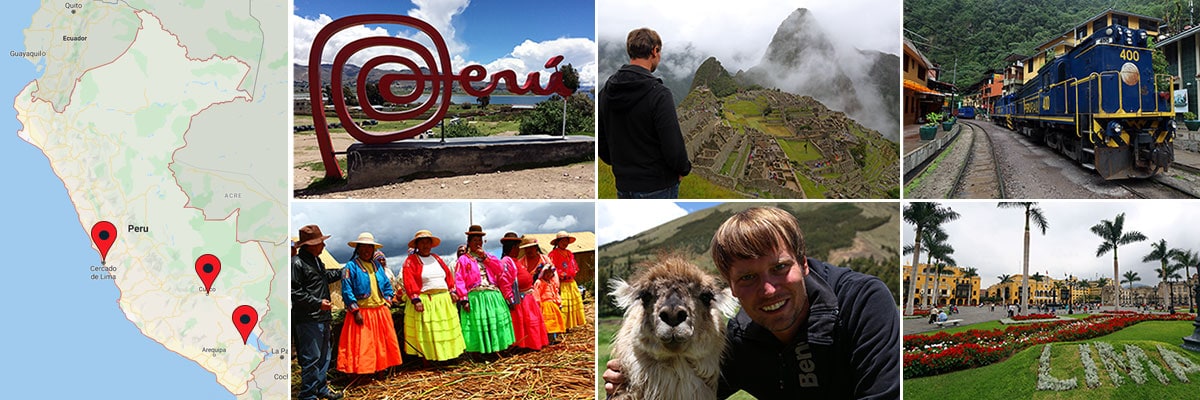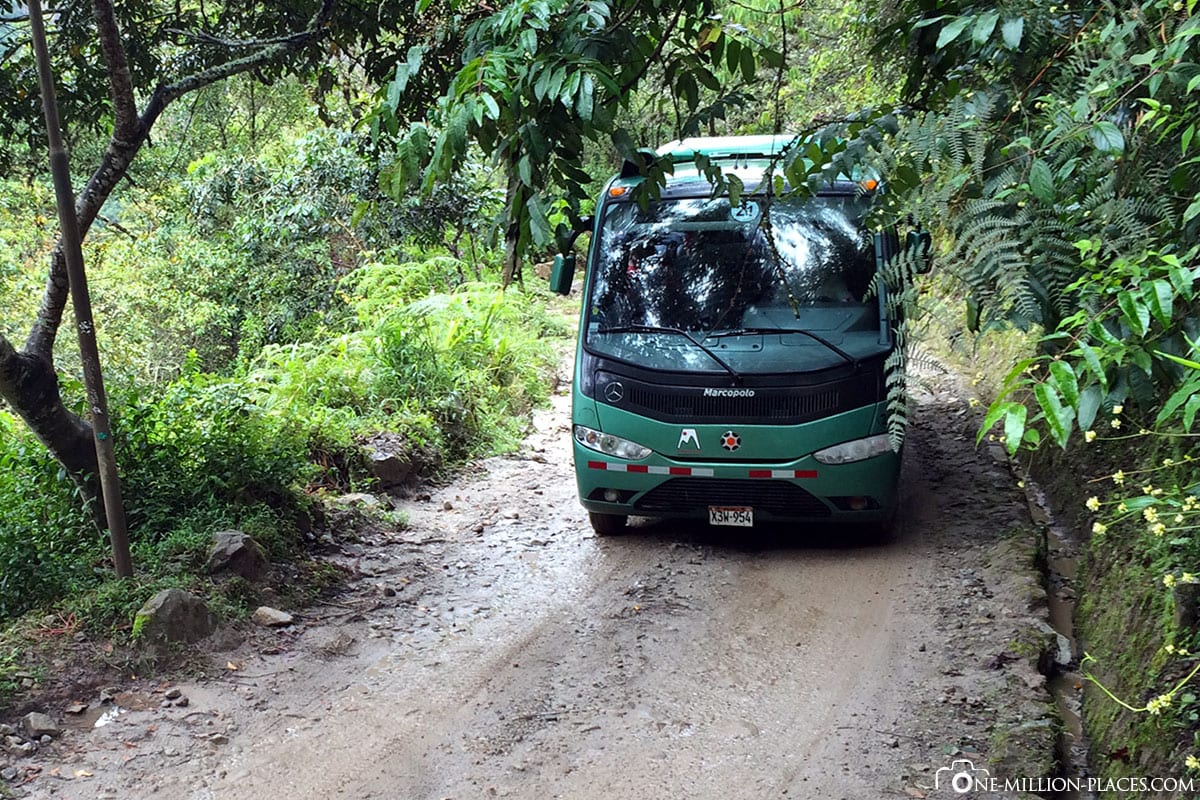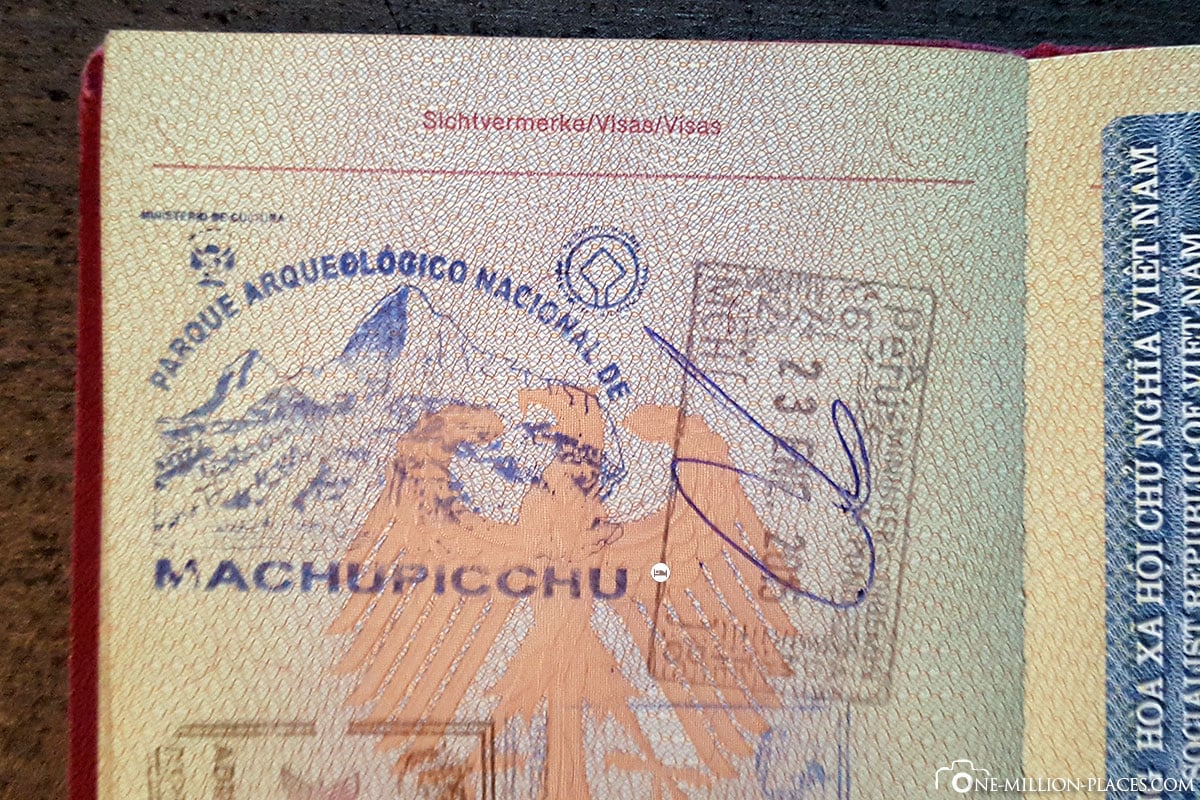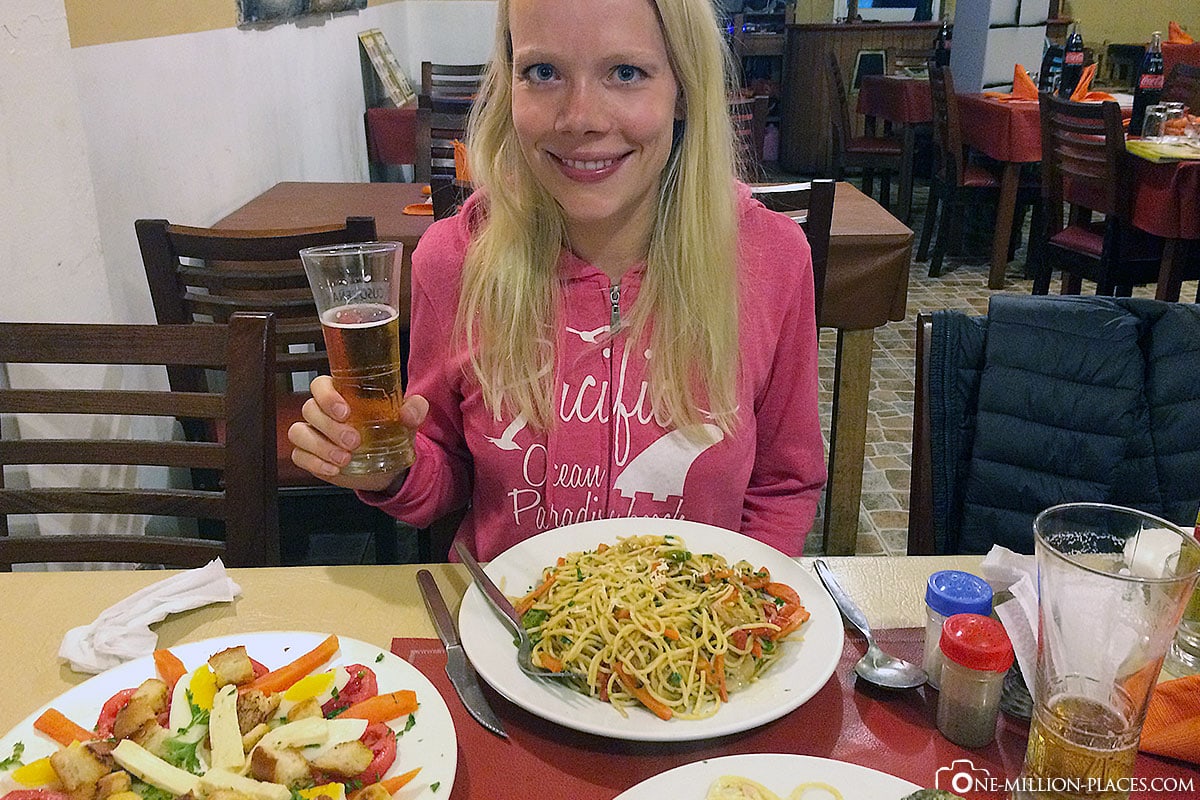Today the alarm clock rang just before 5 o’clock and we were looking forward to a very special highlight of our world rise: the visit to the ruined city of Machu Picchu. We really wanted to see the old city of the Incas in the Andes and it was one of the first places to plan our world trip 🙂

Table of contents
By bus from Aguas Calientes to Machu Picchu
Immediately after breakfast in our hotel we got on one of the first buses just before 6 a.m., which took us over the 8 km long serpentine route to Machu Picchu. We had already bought the tickets for the bus the night before and the stop is only a few meters from our Hotel Casa Andina Classic Machu Picchu (see Google Maps). The bus ride from Aguas Calientes takes about half an hour.
Worth knowing about the ruined city of Machu Picchu
Machu Picchu is a well-preserved ruined city at 2,360 meters, a UNESCO World Heritage Site since 1983 and one of the seven new wonders of the world since 2007. The Incas built this terraced town on a ridge in the 15th century. The American Hiram Bingham is considered in many media as the discoverer of Machu Picchu in 1911. In fact, the German Augusto Berns Machu Picchu is said to have discovered it as early as 1867, when he felled wood for railway construction.
Arriving at the top we had to show our tickets and passports at the entrance, which we had already bought 2 days earlier in Cusco. Armed with our blue raincapes, we were very curious to see what our view of Machu Picchu would be like. During our tour in Uyuni we were told by the couple from Denmark and the couple from Switzerland that they had seen almost nothing of Machu Picchu a few days earlier. Some of them were completely closed all day long, while others had good visibility for 5 minutes. Machu Picchu in the rainy season (November to March) is a pure gamble. And also with us it rained already in the early morning and there was dense fog over the mountains.
As we passed the entrance, we walked up the stairs to the left to see the “typical” view of Machu Picchu. As feared, the site was in fact almost completely clouded and one had hardly seen anything.
Exploring the ruins
But the weather can really change abruptly here. A few minutes later, despite the light drizzle, we had a wonderful view of Machu Picchu. In total we spent 6 hours in the ruined city and the terraced slopes and of course the whole complex expired. It’s impressive to imagine how it all turned out in the past. The view of the complex is simply breathtaking and it is hard to imagine how the Incas were able to build this city on a ridge far away from everything almost 500 years ago.
And when we left the premises, we had a stamp on our passport as a reminder.
A video of the fog in Machu Picchu
It is very interesting to see how the clouds and the fog move constantly above and between the individual mountain slopes and over the ruins.
The trail from Machu Picchu to Aguas Calientes
For the way back to Aguas Calientes we decided for the approximately 1 hour long hiking route. As an alternative to the bus, you can also run the complete plug. For this purpose, stairs lead from the entrance to Machu Picchu down through the forest into the village. The path winds further and further down.
Around 2 p.m. we were completely exhausted – but happy – back in the hotel. After a short midday sleep we walked through the city in the evening and chose a small restaurant for dinner.
A great day! Tomorrow we will take the train back to Cusco and from there to the capital Lima.
All travelogues from Peru
Peru was one of the countries which was set from the beginning in the planning our world trip 🙂 We had already seen so many pictures of the Inca city Machu Picchu that we definitely wanted to see it. And our route through Peru we could also connect perfectly with Bolivia and Ecuador. » Lima – Tourist Attractions, Things to Do & Photo Spots (Peru)
» Lima – Tourist Attractions, Things to Do & Photo Spots (Peru)» From Aguas Calientes via Cusco to Lima (Peru)
» Machu Picchu – Historic Sanctuary of the Incan citadel (Peru)
» Perurail – By train from Cusco to Aguas Calientes (Peru)
» Cusco – Tourist Attractions, Things to Do & Photo Spots (Peru)
» Pass road La Raya – By bus from Puno to Cusco (Peru)
» Puno & the floating villages of the Uros in Lake Titikaka (Peru)
» By bus from La Paz (Bolivia) to Puno (Peru)



